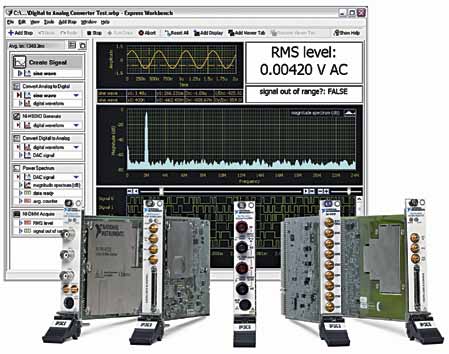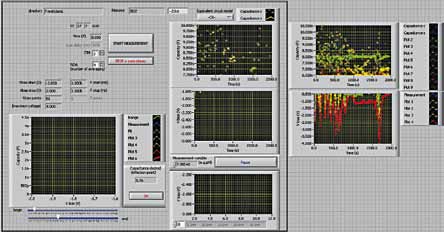A traditional test instrument is equipped with a fixed user interface and in-built programmed software and, hence, is not capable of testing multiple applications. This means that as soon as the test and measurement requirements change, the traditional test set-up has to be completely revamped. Let’s take a look at another option
Ashwin Gopinath

The most talked about feature for T&M systems nowadays is a software-based ecosystem. In the past, T&M was reliant on the traditional instrumentation approach for specific tasks. However, the testing capabilities of this approach have become increasingly inadequate due to the growing demand for instruments that support multiple tests. Software-defined, modular instrumentation is gaining popularity as it offers flexibility, scalability and higher speeds. A modular instrument is essentially generic hardware that acquires and generates raw data while the software is stored on the user’s PC, which allows user-defined measurements and analysis. A successful software defined T&M system comprises hardware platforms that are modular, reconfigurable and based on open industry standards, as well as system-design software that can be used to easily define the functionality of the system.
Chinmay Misra, technical marketing engineer, National Instruments India, explains the advantages of a software-centric ecosystem, “Since the instrument’s functionality is software defined, clearly, a software centric ecosystem is of utmost importance. Communities of developers and integrators, building on standard software platforms, using commercial off-the-shelf technology, make it possible to extend the functionality of complex hardware to cover applications previously impossible. With software easily available because of the ecosystem, it becomes possible for a test engineer to make a generic test system to test multiple products with the same hardware set-up. Using the same hardware keeps the costs down, while having an ecosystem makes IPs readily available and thus increases productivity.” He explains that this is an example of application software made more valuable through its ecosystem.
A significant number of engineers have been trained on LabVIEW and have developed add-ons suitable for private application needs as well as other uses, through commercial vehicles like the system integrators in the NI Alliance Partner Network. In fact, an installable version of LabVIEW is being included with the September edition of EFY Plus magazine, so that interested engineers can test the software without having to download the huge file. With every additional supplier, producer, competitor or other stakeholder, the value of the software to each user, grows.

According to industry experts, the level of productivity and collaboration delivered by software-centric ecosystems will have a profound effect on test system design over the next five to ten years, and therefore all major T&M players are driving the growth of an ecosystem around their software and hardware platforms.
Advantages for engineers using the software -centric approach
The advantages of possessing a software -centric ecosystem for your hardware needs are many. From immediate benefits like increasing productivity and optimising costs to the long-term benefits like being able to go into previously niche areas, the adoption of a software-led ecosystem is going to be crucial in the coming years.
Productivity. With software defined instrumentation, and with software IPs available easily from the ecosystem, the test engineer has the freedom to quickly mix and match various commercial of-the-shelf (COTS) hardware and software to customise a generic test system to test multiple products. This drastically increases the productivity of the test engineer, which is very much required in today’s scenario where more and more products get released every day.
Cost optimisation. Operational test costs are a combination of development costs, deployment costs and operational costs. A platform and ecosystem based approach, and hardware and software reuse for multiple tests, reduces development costs because of lower hardware requirement and the reuse of hardware for different test set-ups. This also reduces operational costs because of lower space requirements, as modular instruments have a compact form factor, and cuts deployment costs by driving down the man hours required for tests and reducing the need of specialised training on different tools.
Penetration into niche areas. An ecosystem makes it possible for domain experts to expand the power of the hardware and software platforms of a T&M player by developing and sharing add-ons and toolkits for applications in their domains. This provides an opportunity to the T&M player to expand into niche domains, which may not have been its strong point, earlier.
Madhukar Tripathi, Regional Manager, Anritsu India states, “Future measurement techniques will be based on software or T&M based on software only. The utility of any T&M instrument is based purely on its software, Graphical User Interface (GUI). An easy GUI makes it more user-friendly and saves a lot of testing time. Online help, remote control, automation/automatic measurement are some trends which, we believe, will dominate T&M ecosystem.”








